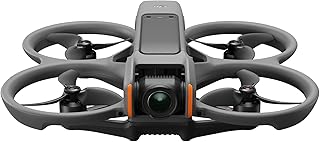DJI Drone Features and Capabilities Explained: A Deep Dive
DJI, a leading drone manufacturer, offers a wide range of drones with diverse capabilities, catering to various needs. Here's a breakdown of key features and capabilities:
1. Flight Performance:
* Flight Time: Varies significantly based on model, ranging from around 20 minutes for smaller drones to 50+ minutes for larger ones. Factors like payload, wind, and temperature affect flight time.
* Range: DJI drones utilize radio frequency communication for control. Range varies with signal strength and interference, typically reaching 7-10km for most models. Some offer long-range capabilities (up to 15km) with specific transmission systems.
* Speed: DJI drones are known for their agility and speed. They can typically fly at around 40-50 km/h, with some models reaching higher speeds.
* Obstacle Avoidance: Most DJI drones feature sophisticated obstacle avoidance systems with multiple sensors (sonar, visual, and infrared) to detect and navigate around objects. Advanced models offer more robust 360�� obstacle avoidance.
2. Camera and Imaging:
* Camera Resolution: DJI offers drones with high-resolution cameras ranging from 4K (3840x2160 pixels) to 5.4K (5472x3078 pixels) for capturing stunning aerial footage.
* Sensor Size: Larger sensor sizes (e.g., 1-inch CMOS) result in better low-light performance and greater dynamic range for capturing richer details and colors.
* Gimbal Stabilization: 3-axis stabilized gimbals ensure smooth and stable video footage even during flight.
* Zoom Capabilities: Some models offer optical or hybrid zoom functionalities, allowing you to zoom in on subjects without losing image quality.
* Advanced Features: DJI drones offer features like HDR, D-Log profiles, and RAW image capturing for professional-level photography and videography.
3. Flight Modes and Intelligent Features:
* ActiveTrack: This feature allows the drone to automatically track moving subjects, like people or vehicles.
* Point of Interest (POI): Allows the drone to fly in circles around a specific point, capturing 360�� footage.
* Waypoints: Pre-programmed flight paths can be set for automated flights, enabling complex aerial photography or inspections.
* RTH (Return to Home): This feature automatically guides the drone back to the takeoff point if the signal is lost or the battery is low.
* Gesture Control: Some models enable control using simple hand gestures, offering an intuitive flying experience.
* Flight Planning: Advanced apps like DJI Pilot allow for detailed flight path planning, mission management, and data collection for professional applications.
4. Connectivity and Data Management:
* Remote Control: DJI drones are controlled with dedicated remote controllers, providing real-time control and monitoring. Some models offer compatibility with mobile devices.
* Data Storage: SD card slots allow for storing captured footage and photos.
* Cloud Storage: DJI's cloud service, DJI Fly, allows for file storage, editing, and sharing.
* Live View: Real-time video feed from the drone is displayed on the remote controller or mobile device, enabling live monitoring and adjustments.
5. Battery and Power:
* Flight Time: Battery life is crucial for drone operation. DJI offers various battery capacities, affecting flight time and performance.
* Charging Capabilities: DJI provides dedicated charging hubs and solutions for efficient battery management.
* Power Management: Advanced drones feature intelligent battery management systems, optimizing power consumption and ensuring safe operation.
6. Applications:
DJI drones are utilized in various fields:
* Photography and Videography: Aerial photography and videography, cinematic shots, time-lapses, and real estate documentation.
* Inspection and Monitoring: Infrastructure inspections, surveying, search and rescue, agriculture, and environmental monitoring.
* Delivery and Logistics: Package delivery, mapping and surveying, and data collection.
* Security and Surveillance: Perimeter security, aerial surveillance, and crowd management.
* Research and Development: Scientific research, data collection, and environmental studies.
7. Safety Features:
* Geo-fencing: Pre-programmed areas restrict drone flight to ensure safety and compliance with regulations.
* Emergency Braking: Rapid braking capabilities for immediate response in emergencies.
* Return to Home: Automated return to takeoff point in case of signal loss or low battery.
* Flight Control Systems: Advanced algorithms ensure stability and safe flight operation.
8. Accessories and Customization:
* Propellers: DJI offers different types of propellers for specific flight tasks and environments.
* Filters: ND filters control light exposure, enabling better shots in bright conditions.
* Payloads: Some drones can carry specific payloads like cameras, sensors, or other equipment.
* Apps and Software: DJI provides apps and software for flight control, mission planning, and data analysis.
Choosing the right DJI drone depends on your specific needs and budget. Consider the features, capabilities, and applications mentioned above to make an informed decision.


